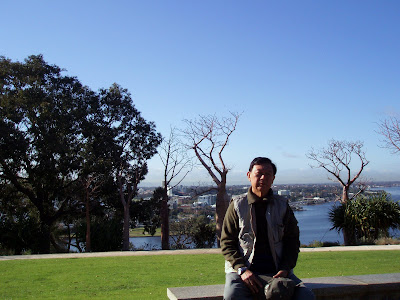picture by hendra boeniardi
In 1670, Louis XIV - the Sun King - founded Les Invalides near what was then called the Grenelle Plain. An old soldiers home, it was funded by a five year levy on the salaries of soldiers currently serving in the army at that time. The first stones were laid in 1671, for what was to become a complex providing quarters for 4,000. Construction followed plans drawn up by Libéral Bruant, and was completed in 1676. The Esplandade was layed out by Robert de Cotte.
Construction of the dome began in 1706. Designed by Jules Hardouin-Mansart and completed by de Cotte after Mansart died in 1708. Many of the arms used by the mob when it attacked the Bastille on 14 July 1789 were taken from Les Invalide on the morning of that day. Despite resistence by the posted sentries, they were overwhelmed by the mob which finally entered the underground rifle storehouse. Roughly 28,000 arms were taken. of the dome began in 1706. Designed by Jules Hardouin-Mansart and completed by de Cotte after Mansart died in 1708. Many of the arms used by the mob when it attacked the Bastille on 14 July 1789 were taken from Les Invalide on the morning of that day. Despite resistence by the posted sentries, they were overwhelmed by the mob which finally entered the underground rifle storehouse. Roughly 28,000 arms were taken.
The most significant event in the history of Les Invalides however, is unquestionably the return of the body of Napoléon in 1840. After seven years of negotiation with the British government, Louis-Philippe, King of France, obtained permission to repatriate the Emperor's remains from St. Helena. On 8 October 1840 - 19 years after the death of the Emperor - the coffin was exhumed and opened for two minutes before transport to France aboard the frigate La Belle Poule. Those present claim that the body remained in a state of perfect preservation.
After arriving at Le Havre, it was brought up the Seine and landed at Paris at Courbevoie. On 15 December 1840 a state funeral was held, and despite a winter snowstorm, the hearse proceeded from the Arc de Triomphe down the Champs-Elysées, across the Place de la Concorde to the Esplanade and finally to the cupola in St Jerome's Chapel until the tomb - designed by Visconti - was completed. On 3 April 1861 Napoléon I came to his final rest in the crypt under de dome.(PARIS.ORG)

HENDRA TANOEMIHARDJA"S area of contemplation
To write down everything just owned by human to aware our existence, transcendent our thought and therefore to differentiate us with another creatures, included creatures as angels and demons. And our Father made us inferior only to Himself.
AREA OF CONTEMPLATION WITH AWARENESS THAT GOD ALWAYS LOVE AND NEVER ABANDON US.
Lorem ipsum dolor sit dicatum animum explorant plena dilectione Dei notitia , et non derelinquas nos semper.
Tuesday, November 25, 2008
Monday, November 24, 2008
INSTITUT DE FRANCE WITH THE CUPOLA ON THE TOP

picture by hendra boeniardi
The Institut de France (French Institute) is a French learned society, grouping five académies, the most famous of which is probably the Académie française. The institute manages approximately 1,000 foundations, as well as museums and chateaux open for visit. It also awards prizes and subsidies, which amounted to a total of 5,028,190.55 euros for 2002. Most of these prizes are awarded by the Institute on the recommendation of the académies. The Institut de France was created on 25 October 1795. It was created by former members of the Masonic lodge Les Neuf Sœurs.
LA CONCIERGERIE , GUILOOTINE , FRENCH REVOLUTION

picture by hendra boeniardi
The Conciergerie and the French Revolution.
The Conciergerie thus already had an unpleasant reputation before it became internationally famous as the "antechamber to the guillotine" during the Reign of Terror, the bloodiest phase of the French Revolution. It housed the Revolutionary Tribunal as well as up to 1,200 male and female prisoners at a time. The Tribunal sat in the Great Hall between 2 April 1793 and 31 May 1795 and sent nearly 2,600 prisoners to the guillotine. Its rules were simple. Only two outcomes existed — a declaration of innocence or a death sentence — and in most cases the latter was chosen. The most famous prisoners (and victims) included Queen Marie Antoinette, the poet André Chénier, Charlotte Corday, Madame Élisabeth, Madame du Barry and the Girondins, who were condemned by Georges Danton, who was in turn condemned by Robespierre, who was himself condemned and executed in a final bout of bloodletting. En route to the tumbrils, the victims walked through the Salle Saint-Louis, (Saint Louis Room), which acquired the nickname of the Salle des Perdus, the "Room of the Doomed".(WIKIPEDIA)
Labels:
French Revolution,
guillotine,
history,
prison
MUSEE DE LA LEGION DE HONNEUR
picture by hendra boeniardi
The Palais de la Légion d'Honneur was constructed between 1782 and 1787 by the architect Pierre Rousseau (1751–1810) for the German Prince Frederick III, Fürst of Salm-Kyrburg. The revolutionary government nationalised the building, and from 13 May 1804 it became the seat of the newly created Légion d'honneur. It was destroyed by fire under the Paris Commune in 1871, but was reconstructed with the support of funds raised among recipients of the Légion d'honneur and of the military medals which it also commemorates.
The Palais de la Légion d'Honneur was constructed between 1782 and 1787 by the architect Pierre Rousseau (1751–1810) for the German Prince Frederick III, Fürst of Salm-Kyrburg. The revolutionary government nationalised the building, and from 13 May 1804 it became the seat of the newly created Légion d'honneur. It was destroyed by fire under the Paris Commune in 1871, but was reconstructed with the support of funds raised among recipients of the Légion d'honneur and of the military medals which it also commemorates.
Labels:
history,
museum,
REVOLUTION
MUSEE DE ORSAY FROM SEINE RIVER
picture by hendra boeniardi
The Musée d'Orsay is a museum in Paris, France, on the left bank of the Seine, housed in the former railway station, the Gare d'Orsay. It holds mainly French art dating from 1848 to 1915, including paintings, sculptures, furniture, and photography, and is probably best known for its extensive collection of impressionist masterpieces by such painters such as Monet, Degas, Renoir, and Cezanne. Many of these works were held at the Galerie nationale du Jeu de Paume prior to the museum's opening in 1986.
Saturday, November 22, 2008
AMSTERDAM CITY OF 15 THOUSAND CANALS. HOW COME A LITTLE NATION ANEX A BIG NATION FOR 3.5 CENTURIES ?
picture by hendra boeniardi
kasihan bangsa yang tidak pernah angkat suara
kecuali yang sedang berjalan diatas kuburan
tidak sesumbar kecuali di reruntuhan
dan tidak memberontak
kecuali lehernya sudah berada
di antara pedang dan landasan
kasihan bangsa yang negarawannya serigala
filosofnya gentong nasi
dan senimannya tukang tiru
kasihan bangsa yang menyambut penguasa barunya
dengan terompet kehormatan
namun melepasnya dengan cacian
kasihan bangsa yang orang sucinya dungu
menghitung tahun - tahun berlalu
kasihan bangsa yang terpecah - pecah
dan masing - masing pecahan
menganggap dirinya
sebagai bangsa
(Kahlil Gibran, dalam "bangsa kasihan") - Jesus Son Of Man
Friday, November 21, 2008
THE SEINE RIVER - PARIS FROM DE L'ALMA - TOUT PARIS SUR SEINE
picture by hendra boeniardi
The Seine (pronounced is a slow flowing major river and commercial waterway within the regions of Île-de-France and Haute-Normandie in France and famous as a romantic backdrop in photographs of Paris, France. It is also a tourist attraction, with excursion boats offering sightseeing tours of the Rive Droite and Rive Gauche within the city of Paris. It terminates in the Bay of the Seine region of the English Channel and is navigable by oceanic transports about ten percent of its length to Rouen, 120 km (75 miles) from the sea, whereas over sixty percent of its length from Burgundy near the Swiss Alps is negotiable by commercial riverboats and nearly it's whole length is available for recreational boating. There are over three dozen bridges over the River Seine just within Paris and dozens more spanning the river outside of the city. Examples in Paris include the Pont Louis-Philippe and Pont Neuf, the latter which dates back to 1607. Outside of the city, examples include the Pont de Normandie, one of the longest cable-stayed bridges in the world, which links Le Havre to Honfleur (Wikipedia)
ASSEMBLE DE NATIONALE , PARLIAMENT OF FRANCE - PARIS
picture by hendra boeniardi
The French National Assembly (French: Assemblée nationale) is the lower house of the bicameral Parliament of France under the Fifth Republic. The other is the Senate (“Sénat”). The National Assembly consists of 577 members known as députés (deputies), each elected by a single-member constituency. Deputies are elected in each constituency through a two-rounds system. 289 seats are required for a majority. It is presided over by a president (currently Bernard Accoyer), normally from the largest party represented, assisted by vice-presidents from across the represented political spectrum. The term of the National Assembly is five years; however, the President of the Republic may dissolve the Assembly (for example, by calling for new elections) unless he has dissolved it in the preceding twelve months. This measure is becoming rarer since the 2000 referendum reduced the President's term from seven to five years : a President has its majority elected in the Assembly two months after him, and it would be useless for him to dissolve it.
The official seat of the National Assembly is the Palais Bourbon on the banks of the river Seine. (Wikipedia)
The French National Assembly (French: Assemblée nationale) is the lower house of the bicameral Parliament of France under the Fifth Republic. The other is the Senate (“Sénat”). The National Assembly consists of 577 members known as députés (deputies), each elected by a single-member constituency. Deputies are elected in each constituency through a two-rounds system. 289 seats are required for a majority. It is presided over by a president (currently Bernard Accoyer), normally from the largest party represented, assisted by vice-presidents from across the represented political spectrum. The term of the National Assembly is five years; however, the President of the Republic may dissolve the Assembly (for example, by calling for new elections) unless he has dissolved it in the preceding twelve months. This measure is becoming rarer since the 2000 referendum reduced the President's term from seven to five years : a President has its majority elected in the Assembly two months after him, and it would be useless for him to dissolve it.
The official seat of the National Assembly is the Palais Bourbon on the banks of the river Seine. (Wikipedia)
TOUT PARIS SUR SEINE - ON THE BATEAUX MOUCHES PARIS
God grant us
the serenity to accept
the things
we can not change
courage to change
the things
we can
and
wisdom to know the difference
(Robert J. Furrey in Psychology of Humility)
Thursday, November 20, 2008
MONACO , FROM PRATTO TO GENOA AND FRENCH RIVIERA AFTER WARD TO NICE
Monaco is a small sovereign "city-state" ( 1.95sq km ) located in Western Europe. The territory lies on the northern coast of the Mediterranean Sea and is completely enclosed by France. Monaco is often regarded as a tax haven, and many of its inhabitants are wealthy and from foreign countries, making up a majority of 84%.[3]
Monaco is a Constitutional Monarchy and Principality with Prince Albert II as head of state. The Grimaldi family has ruled over Monaco since 1297 and the state's sovereignty was officially recognized by the Franco-Monegasque Treaty of 1861. Despite being independent, Monaco’s defense is still the responsibility of France.
Monaco is the world’s most densely populated sovereign country, and the world's smallest French-speaking country. ( Wikipedia )
Sunday, November 9, 2008
Tuesday, November 4, 2008
ARC DE TRIOMPHE - NAPOLEON NEVER LOST THE BATTLES OTHERWISE THE WATERLOO AT THE END
Louis Napoleon Bonaparte or, after 1804, Napoleon I, Emperor of the French from 1804 to 1814 and from 1 March to 22 June 1815, and King of Italy. He was the greatest general of his age--perhaps any age, with a sure command of battlefield tactics and campaign strategies. He revolutionized the military applications of artillery, and routinely moved his troops faster and with fewer supplies than was then thought possible, allowing for amazingly large and rapid concentrations of force against his slower and less adaptable enemies.
As a civil leader he played a major role in the French Revolution, then ended it when he became dictator in 1799 and Emperor of France in 1804. He modernized the French military, fiscal, political legal and religious systems. The Napoleonic Civil Code is considered the first successful codification that strongly influenced the law of many other countries.
He fought an unending series of wars against Britain with a complex, ever-changing coalition of European nations on both sides. Refusing to compromise after his immense defeat in Russia in 1812, he was overwhelmed by a coalition of enemies, forced to abdicate in 1814 and sent into exile at Elba (an island north of Rome). In 1815, after escaping from Elba, he took control of France again, built a new army, and in 100 days almost succeeded, but was defeated at Waterloo and exiled to St. Helena--an island in the South Atlantic Ocean; there he died 6 years later, in 1821. His image and memory are central to French national identity, but he is despised by the British and Russians and is a controversial figure in Germany and elsewhere in Europe (Conservapedia)
Sunday, November 2, 2008
LES INVALIDES PARIS - THE NORTH FRONTH
Les Invalides in Paris, France, is a complex of buildings in the city's 7th arrondissement containing museums and monuments, all relating to the military history of France, as well as a hospital and a retirement home for war veterans, the building's original purpose. The buildings house the Musée de l'Armée, the military museum of the Army of France, the Musée des Plans-Reliefs, and the Musée d'Histoire Contemporaine, as well as the burial site for some of France's war heroes
NOTRE DAME BASILIQUE - MOTHER OF CHURCH DIOCESE PARIS
pictured by hendra boeniardi
Coming to prayer is like coming home,
"Nothing feels more right,
more like what we are created to be and to do.
Yet at the same time we are confronted with great mysteries.
Who hasn't struggled with the puzzle of unanswered prayer?
Who hasn't wondered how a finite person can commune
with the infinite Creator of the universe?
Who hasn't questioned whether prayer isn't merely
psychological manipulation after all?
We do our best, of course,
to answer these knotty questions but when all is said and done,
there is a sense in which these mysteries
remain unanswered and unanswerable . . ."
At such times we must learn to become comfortable with the mystery.
(Foster in Prayer)
Coming to prayer is like coming home,
"Nothing feels more right,
more like what we are created to be and to do.
Yet at the same time we are confronted with great mysteries.
Who hasn't struggled with the puzzle of unanswered prayer?
Who hasn't wondered how a finite person can commune
with the infinite Creator of the universe?
Who hasn't questioned whether prayer isn't merely
psychological manipulation after all?
We do our best, of course,
to answer these knotty questions but when all is said and done,
there is a sense in which these mysteries
remain unanswered and unanswerable . . ."
At such times we must learn to become comfortable with the mystery.
(Foster in Prayer)
Saturday, November 1, 2008
THE LORD IS MERCIFUL
The Lord is merciful!
He is kind and patient,
and his love never fails.
He doesn't punish us as our sins deserve.
Just as parents are kind to their children,
the Lord is kind to all who worship him,
because he knows we are made of dust.
We humans are like grass
or wild flowers that quickly bloom.
But a scorching wind blows,
and they quickly wither
to be forever forgotten.
The Lord is always kind
to those who worship him,
and he keeps his promises
to their descendants
who faithfully obey him.
- Psalm 103:8, 10, 13-14, 15-16, 17-18
Subscribe to:
Comments (Atom)
MAP I HAD BEEN THERE
MARY IMMACULATE, SHINING THE BEAUTY

Immaculada de Concepsiou - Pray with Mary for our sins . Ask God give mercy ang grace. Always honoured and praised every where
LITTLE HOUSE ON THE VALLEY , ARAULEN BOTANICAL GARDEN , WA

In summer the flowers , in the silence joyful and happiness
A SERENITY AND SANCTUARY

Invite to pray and contemplation
A PURE SPRING WATER INSIDE GROTTO
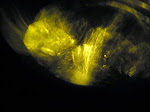
Has continued to flow since 1858 ; he that believeth on Me , out of his belly shall flow rivers of living water
POPE BEFORE THE GROTTO

Pray with Mary when Jubileum Year 150 years
THE MOTHER OF GOD

By her apparitions as Our Lady of Guadalupe to Saint Juan Diego
ALL OF THE SAINTS

When two holly people met
VIA DOLOROSA AT SANCTUARIES LPORDES
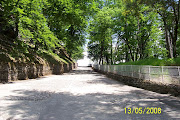
A lonesome road visited by million of pilgrims
FROM GABATHA TO GOLGOTHA

Jesu , Joy of man's desiring . Commemoration of Holy Friday in my parish "You are my disciples, if you keep obeying my teachings"
Mary Magdalene

By Gestilenchi
NOTRE DAME BASILICA - PARIS

Mother of Church Diocese of Paris
LIFE IS EXCITING AND CHALLENGING

Filled it with wonder
NOTRE DAME BASILICA - PARIS
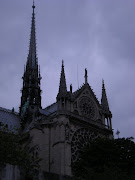
Pictured from Seine river, started build in 11th century , Pope Alexander III laid the first stone
TIME IS ETERNITY

BASILIQUE IMMACULADE DE CONCEPCIOU - SANCTUARIES LOURDES
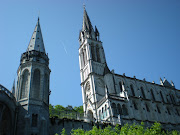
Built as Lady Mary's request to Bernarde
BERNADETTE SOUBIROUS 1844 - 1879 , 18 apparitions of a Lady , Mary

Canonised in 1933 , a miracle : her body incorruptible after death
MARY AT GROTTO WHERE MOTHER OF GOD MET BERNADETTE SOUBIROS in 1858

Eucharist celebration with Sacrament adoration continuously along the day for the glory of God.
CANDLE PROSESSION IN THE FRONT OF BASILIQUE NOTRE DAME SANCTUARY LOURDES
.jpg)
A very amazing and an undescribed feeling and emotion . Hail Mary for the glory of God
BLESSING - MAY OUR GOD GIVE BLESSING

And ye will not come to me, that ye might have life.

















